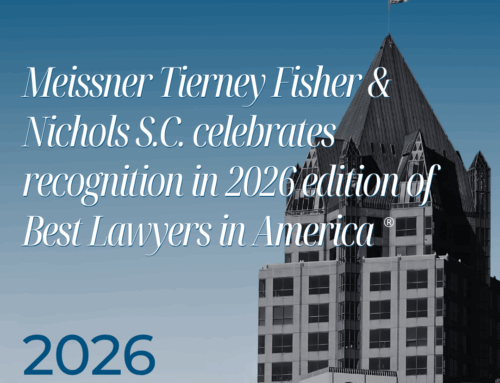Choice of Entity Corner
Introduction
The U.S. federal government is the single largest buyer of goods and services in the world—with most of these purchases being made by executive branch agencies (particularly the Department of Defense).1 Many (but not all) such executive agency purchases are subject to the Federal Acquisition Regulation—or the “FAR.”
The FAR is codified in Parts 1 through 53 of Title 48 of the Code of Federal Regulations, and generally governs the acquisition of goods and services by executive branch agencies.2 The FAR is prepared, issued and maintained jointly by the Department of Defense (DOD), General Services Administration (GSA) and National Aeronautics and Space Administration (NASA).3 However, amendments are arrived at by means of, and with the concurrence of, the Federal Acquisition Regulatory Council (FAR Council)—which consists of the Administrator of the Office of Federal Procurement Policy (OFPP), the Secretary of Defense, the Administrator of National Aeronautics and Space and the Administrator of General Services, or their designees.4
On December 4, 2015, the DOD, GSA and NASA issued a proposed amendment to the FAR which prohibits applicable executive agencies from contracting with corporations having a delinquent federal tax liability or a felony conviction under federal law.5 The proposed amendment was finalized, without revision, on September 30, 2016 (the “Prohibition”).6
In enacting the Prohibition, the FAR Council and the promulgating agencies found themselves having to engage with certain provisions of the Internal Revenue Code (“the Code”) and apply a variety of business organization and choice of entity concepts. However, there is no indication that the FAR Council sought or obtained any direct input or guidance from the IRS or Treasury in this process. The result is interpretive guidance that is much less clear than the plain language of the enabling statute, or even the Prohibition itself, would first suggest.
New Requirements for “Corporations” Regarding Delinquent Tax Liabilities
The impetus for the Prohibition was Section 744 of The Consolidated and Further Continuing Appropriations Act of 2015 (the “Act”), which provides that executive agencies subject to the FAR may not contract with, make a grant to, or provide a loan or loan guarantee to, any corporation that has a delinquent federal tax liability.7 For this purpose, a delinquent federal tax liability means any federal tax liability that (i) is unpaid, (ii) has been assessed, (iii) for which all judicial and administrative remedies have been exhausted or have lapsed and (iv) that is not being paid in a timely manner pursuant to an agreement with the authority responsible for collecting the tax liability.8
To give effect to this provision of the Act, the Prohibition requires those persons seeking a contract with a covered executive agency (an “Offeror”) to make the following representation to the subject agency:
52.209-11(b) The Offeror represents that—
(1) It is not a corporation that has any unpaid Federal tax liability that has been assessed, for which all judicial and administrative remedies have been exhausted or have lapsed, and that is not being paid in a timely manner pursuant to an agreement with the authority responsible for collecting the tax liability …
If the Offeror cannot make this representation, it would effectively create an automatic exclusion that precludes award of federal contracts, unless the agency’s suspension and debarment official has reviewed the matter and determined that further action is not necessary to protect the interests of the government. Moreover, if an Offeror makes this representation and it is later determined to be incorrect, the Offeror risks significant adverse consequences— from debarment to a false claims action. This is particularly true if the false representation was knowingly made.
One of the three commenters on the Prohibition when it was first proposed, the Associated General Contractors of America (AGC), requested clarification as to what entities would and would not be regarded as “corporations” for purposes of the Prohibition.9 The AGC noted that that the term “corporation” would clearly encompass both C corporations and S corporations.10 However, the AGC further observed that LLCs might also be caught up in this definition of “corporation.”11
Inasmuch as the Code clearly provides that LLCs might be taxed as C corporations or S corporations for tax purposes under the “check the box rules,”12 and further treats single-member LLCs as C corporations for employment tax purposes,13 it is certainly true that LLCs may (for tax purposes) be considered “corporations”—even though LLCs are typically regarded as “unincorporated” entities under state business organization statutes. The AGC’s stated concern was that its members might assume that they are not “corporations” because they did not structure themselves in that fashion and, thus, “could under-analyze the apparent applicability” of the Prohibition. To address this, the AGC suggested that the FAR Council define the term “corporation” using “business entity definitions from the Internal Revenue Code as a means to clearly articulate the entities covered.”14
In this same vein, the AGC also sought clarification as to whether and how the Prohibition would be applied to LLCs and S corporations where the tax liability falls at the individual rather than corporate level. The AGC was concerned that there may be some question as to whether the failure of one member or shareholder to pay taxes might somehow adversely affect all member or shareholders— and the unwieldiness that could result where the passthrough entity had a lot of owners.15
What Is a “Corporation” Under the FAR?
The FAR Council observed that the term “corporation” is not defined under the FAR and, as such, is to be afforded its “standard dictionary definition.”16 Without citing any particular dictionary, the FAR Council purported to define a corporation as “a legal entity that is separate and distinct from the entities that own, manage, or control it” and “is organized and incorporated under the jurisdictional authority of a governmental body, such as a State or the District of Columbia.” Unfortunately, a number of entities commonly understood to be “unincorporated”—particularly the LLC—would seem to answer to this rather vague description.
If the FAR Council intended to make the same distinction between “corporations” and “unincorporated entities” that is commonly understood by businesses and their counsel, it could have done a much better job of defining the contours of a “corporation”—as by reference to various state business organization statutes or uniform laws. However, in light of the FAR Council’s discussion of tax concepts that immediately follows this broad definition, it appears that the FAR Council may have taken to the AGC’s suggestion of looking to the Code to determine whether an entity is a “corporation.”
The FAR Council began its effort to link the definition of “corporation” to Code concepts rather inauspiciously by declaring: “The most common type of corporation in the U.S. is the subchapter C corporation—authorized under State law, and subject to tax under subchapter C of the Internal Revenue Code (IRC).”17 Putting aside the inelegant way this response attempts to mash together Code concepts with state law business organization principles, this statement is also not accurate—inasmuch as S corporations constitute a little over 70 percent of all corporations.18 The FAR Council continued its discourse on tax mechanics by stating that the Code and other governing statutes “authorize specialized corporations including the subchapter S corporation (e.g., per the IRC and State laws), professional corporation (PC) (e.g., per State laws), and limited liability company (LLC) (e.g., per State laws).”19
This last statement—which seeks to lump LLCs into the broad general category of “corporations”—is a little hard to work with, given that at least one other provision of the FAR itself makes an express distinction between sole proprietorships, corporations, partnerships and LLCs.20 However, the FAR Council “doubles down” on this position when addressing the question of how the Prohibition applies to passthrough entities.
Effect of Passthrough Taxation
In response to the AGC’s stated concerns about whether and how the Prohibition would apply in the passthrough entity setting, the FAR Council observed that Section 744 of the Act and Prohibition applies to any “corporation” that has an “unpaid Federal tax liability”—and immediately proceeded to explain that the term “unpaid Federal tax liability” is broader than just income tax, stating:
Any corporation, including pass-through entities such as the S corporation and the LLC, may have an unpaid Federal tax liability—there are Federal tax liabilities other than corporate income tax liability. While the S corporation and LLC may not incur Federal income tax liabilities as pass-through entities, they may incur Federal employment tax liabilities under subtitle C of 26 U.S.C. for payroll tax withholdings, social security and Medicare taxes; as well as various Federal excise tax liabilities (e.g., under subtitle D of 26 U.S.C. on communications and air transportation facilities and services, coal, medical devices, group health plans, and failure to maintain minimum essential health insurance coverage; and under subtitle E of 26 U.S.C. on alcohol and tobacco, machine guns, some other firearms, and structured settlement factoring transactions).21
The FAR Council’s distinction between entity-level tax and owner-level tax (which is valid) seems to suggest that Prohibition is only concerned with entity-level federal tax liability—not federal tax liabilities solely at the owner level, even if attributable to passthrough of tax incidences from a “corporation.” However, this response is not a model of clarity. Moreover, the FAR Council’s repeated inclusion of LLCs in the category of “corporations” strongly suggests that it is the tax treatment of an entity that will dictate whether it is a “corporation” for purposes of the Prohibition.
While resorting to the Code for the definition of “corporation” may clarify (for good or for ill) whether an LLC that has affirmatively elected C corporation or S corporation treatment is subject to the Prohibition, it would seem to create a substantial uncertainty with regard to singlemember LLCs (SMLLCs) treated as disregarded entities. As noted above, an entity that is disregarded as an entity separate from its owner is treated as a “corporation” with respect to taxes imposed under Subtitle C—Employment Taxes and Collection of Income Tax (Chapters 21, 22, 23, 23A, 24 and 25 of the Code).22 Inasmuch as the FAR Council has specifically identified “Federal employment tax liabilities” as being within the ambit of the Prohibition, this could be a significant trap for the unwary.
The owner of a disregarded SMLLC, who typically reports his or her business operations on Schedule C of their Form 1040, is even more unlikely to expect to be considered a “corporation” than the owners of an LLC that have made the conscious (and not unsophisticated) judgment to elect corporate status. Moreover, payroll taxes—which must be deposited according to a monthly or bi-weekly schedule, and are even subject a “next day” rule if accrued payroll tax is $100,000 or more on any given day—are a frequent source of penalties.23 Against this background, there is the distinct possibility that a disregarded SMLLC that has a two-percent deposit penalty outstanding from a payroll tax deposit made one to five days late would be considered a “corporation” with an “unpaid Federal tax liability.” If the owner fails to appreciate this and gives the representation required by FAR 52.209-11(b)(1) anyway, this could be a technical breach of representation.
Application to Joint Ventures and Teaming Arrangements
Finally, the AGC raised a concern as to how the Prohibition would apply in the joint venture and teaming contexts. Specifically, whether such arrangements “could provide a loophole” through which corporate entities could seek to avoid both disclosure and possible suspension or debarment.24 Specifically, the AGC inquired:
(1) Could a corporation avoid disclosing a tax delinquency if it became a member of a joint venture?
(2) If a joint venture were structured as a corporate entity, would the underlying entities that made up the joint venture be required to disclose tax delinquencies?25
As to the first question, the FAR Council observed that joint ventures and other “teaming arrangements” may or may not be structured as a “corporation.” Such arrangements can take many legal forms, “including as a C corporation, LLC, or partnership.”26 If the entity constituting the prime contractor in the joint venture or teaming arrangement is a “corporation,” then it is subject to the Prohibition; if it is not a “corporation,” then it is not. In all events, if the signatory for the prime contractor is a corporation, then it is subject to the Prohibition.27
The FAR Council did not specifically address the second question. However, as noted above, it would appear that the FAR Council adheres to the view that it is the entitylevel tax liabilities of the Offeror itself that control—rather than the tax liabilities of the owners (or, in this setting, joint venturers). Again, this could be clearer.
Conclusion
The AGC’s comments on the Prohibition, while motivated by a concern that its members might “under-analyze” its scope, appear to have resulted in the FAR Council “over-analyzing” and “under-explaining” the seemingly straightforward notion of what is a “corporation.” As a result, we now have a regulatory landscape in which disregarded SMLLCs—which hardly any owner would typically think of as a being a “corporation”—may unwittingly be subject to a prohibition expressly limited to “corporations” by statute. The FAR Council has indicated that, if the Offeror or contractor is uncertain as to its legal status as a corporation, “the offeror or contractor needs to consult with its legal counsel to determine whether it is a corporation subject to sections 744 and 745.”28 This would seem to tee up some sort of “advice of counsel” defense to a claim of knowing or willful failure to comply. However, as with much of the FAR Council’s guidance on the Prohibition, this too is unclear.
Endnotes
1 See Congressional Research Service Report R42826, The Federal Acquisition Regulation (FAR): Answers to Frequently Asked Questions (Feb. 3, 2015), at 1.
2 Id., at 2.
3 Id., at 12.
4 Id.
5 See 80 FR 75903 (Dec. 4, 2015).
6 See 81 FR 67728 (Sept. 30, 2016).
7 Section 744 of Division E of The Consolidated and Further Continuing Appropriations Act, 2015 (P.L. 113-235).
8 Id.
9 Available online at www.regulations.gov/document?D=FAR-2015-0011-0003 (last visited Jan. 29, 2017) (the “AGC Comments”).
10 See AGC Comments at 3.
11 The AGC identified LLCs as “limited liability corporations”—rather than limited liability companies. However, given the later discussion in the letter about the passthrough nature of these entities, it seems reasonably clear that reference to “limited liability companies” is intended. See id. Moreover, the FAR Council’s responses to this comment when promulgating the final version of the Prohibition expressly use the term “limited liability company.” See 81 FR 67728 (Sept. 30, 2016).
12 See Reg. §301.7701-3(a).
13 See Reg. §301.7701-2(c)(2)(iv).
14 See AGC Comments at 3.
15 See id., at 4.
16 81 FR 67728 (Sept. 30, 2016).
17 Id., at 67729.
18 The IRS’s own website states that “S corporations continue to be the most prevalent type of corporation.” See www.irs.gov/uac/soi-taxstats-s-corporation-statistics. In 2003 alone, approximately 61.9 percent of all corporations filed a Form 1120S, and this number has climbed to a little over 70 percent of all corporations as of 2012 (the most recent year for which such data are available). See www.irs.gov/uac/soitax-stats-integrated-business-data.
19 81 FR at 67729 (emphasis added).
20 See 48 CFR 19.1503(c)(2)(iii)&(vi) (distinguishing sole proprietorships, corporations and LLCs in the list of organizational documents required to be provided in connection with participation in the Women-Owned Small Business Program).
21 81 FR at 67729 (emphasis added).
22 See Reg. §301.7701-2(c)(2)(iv).
23 See, e.g., Publication 15 (Circular E) Employer’s Tax Guide (2017) at 25–30.
24 See AGC Comments at 4.
25 Id.
26 81 FR at 67729.
27 Id.
28 Id.
This article is reprinted with the publisher’s permission from the Journal of Passthrough Entities, a bi-monthly journal published by Wolters Kluwer. Copying or distribution without the publisher’s permission is prohibited. To subscribe to the Journal of Passthrough Entities or other Wolters Kluwer Journals please call 800-449-8114 or visit CCHGroup.com. All views expressed in the articles and columns are those of the author and not necessarily those of Wolters Kluwer or any other person. © CCH Incorporated. All Rights Reserved.
© 2018 CCH Incorporated and its affiliates. All rights reserved. Reprinted with permission from the Journal of Passthrough Entities.






